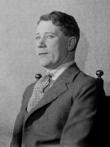Bluebeard begins in Toyland, where the arrival of Father Christmas heralds the traditional quest for a pantomime story. In the second scene, set in the Square of Aleppo, the forces of evil (led by Demon Discord) and the forces of good (led by Queen Felicity) draw their battles lines prior to the arrival of Bluebeard. The story proper then begins, as Selim's sweetheart Fatima is abducted by Bluebeard and taken to his harem. Meanwhile, Selim declares, 'I am a lover brave and true, and all the world knows what a lover can do.' He then sets forth on the H.M.A.S. Melbourne to rescue his would-be lover.
Act II begins in Bluebeard's Fairy Garden, in the centre of which lies a Wonderful Water Fountain. Fatima, now firmly in the grip of Bluebeard's power, has been condemned to die just like his seven wives. At midnight, upon the conclusion of 'Weird Ghost Ballet', Selim arrives to rescue Fatima, and dispatches Bluebeard in the process. The pantomime ends in Selim's Wonderful Palace of Fans, a setting that leads to the transformation scene, titled 'The March of the Fans.' 'The Wedding of Selim and Fatima' is then followed by the glittering finale 'Wedding Bells' (Fuller News 18 February 1922, p.9).
W. Hamilton Webber's original incidental music and several songs (co-written with Frank Neil) were utilised in each of the productions below. Additional material comprised popular songs of the day and several songs by cast members. For example, Vince Courtney contributed 'That Little Home among the Hills' and 'Sarah.'
The libretto for the 1921/1922 Melbourne season, although based largely on the 1918 version, is believed to have contained some new songs and up-to-date comic business. The original songs included in that production included the opening chorus and Act 1 finale chorus 'Floating Away' (Neil/Webber); 'Come to the Great Bazaar Today' (Webber); 'Cuddle in your Mammy's Arms' (Neil), sung by Fifi de Tisne; 'The Passing of the Hours' (a ballet by Neil/Webber); and 'Swan Boat' (Neil/Webber), sung by Essie Jennings and chorus. Other songs incorporated into the pantomime were 'Just Had a Drop of Gin with Martha', 'Let's All Have a Jolly Good Cry', and 'A Nosy Noise Annoys an Oyster' (sung by Jim Gerald); 'Let's all be Good Pals Together' and 'Lucky' (Nellie Kolle); 'Welcome to the Day', 'Cleopatra's Got a Jazz Band Now', and 'Jazz Boat' (Fifi de Tinse); and 'Wedding Bells' (Company). Nat Phillips also contributed a song to the 1921/22 production: 'The Pickanniny's Land of Dreams.'
Dance numbers included 'The Spirit of the Dawn' and 'The Enchanted Mummy Dance' (performed by Polly McLaren), 'The Golden Fairy Ballet' (Dot Tointon), and 'The Skeleton Ballet.'

